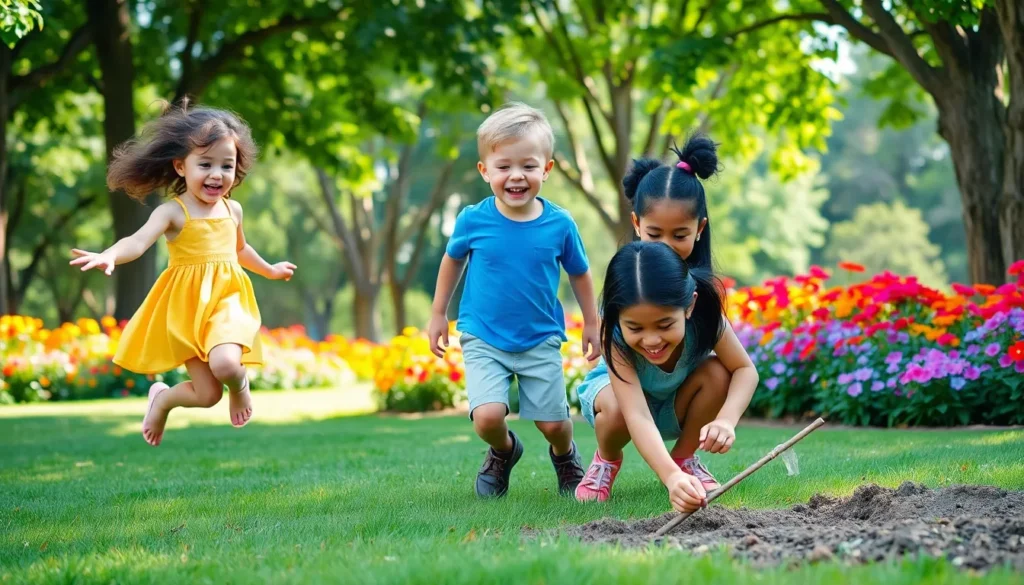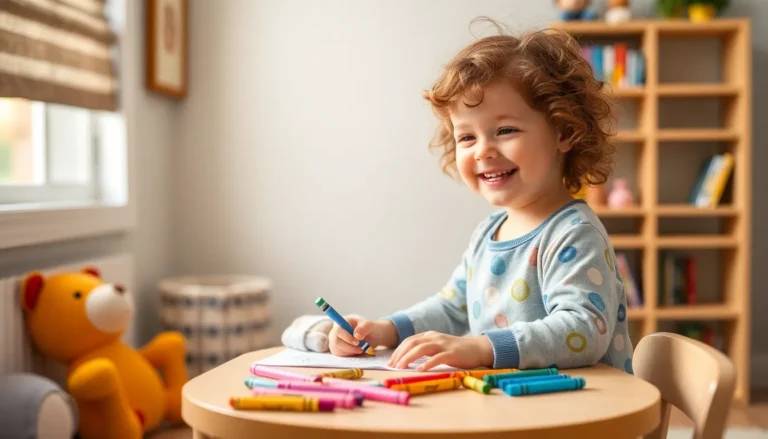Table of Contents
ToggleIn today’s fast-paced world, even kids can feel the weight of stress on their tiny shoulders. Between school, extracurricular activities, and the occasional sibling rivalry, it’s no wonder they sometimes need a break. But fear not—stress relief for kids doesn’t have to be boring or complicated. With a sprinkle of creativity and a dash of fun, parents can turn stress-busting into an exciting adventure.
Understanding Stress In Kids
Stress among children increasingly affects their well-being. School performance, extracurricular activities, and family issues often contribute to this mental strain.
Common Causes of Stress
Academic pressure ranks high among stressors. Many kids face demanding homework loads and rigorous testing. Additionally, social dynamics, including friendships and bullying, can heighten anxiety. Family matters, such as divorce or relocation, impact emotional stability. Changes in routines, such as starting a new school year, can also trigger stress responses. Exposure to technology adds another layer, as screen time may lead to social comparison and unrealistic expectations.
Signs and Symptoms of Stress
Physical complaints often emerge as kids experience stress. Headaches and stomachaches frequently indicate underlying tension. Emotional symptoms include irritability and mood swings, showcasing their struggles to cope. Behavioral changes, such as withdrawal from social activities and changes in sleeping patterns, are common. Furthermore, difficulty concentrating on tasks signals possible stress overload. Recognizing these signs enables parents and caregivers to intervene and provide support effectively.
Effective Stress Relief Techniques

Stress management can be both enjoyable and engaging for children. Several effective techniques help alleviate stress, allowing kids to feel more relaxed and focused.
Physical Activities
Physical activity serves as an excellent outlet for stress relief. Activities like running, swimming, or biking release endorphins, improving mood. Group sports foster teamwork and social interaction, helping children build connections. Daily movements, such as dancing or yoga, promote both physical health and emotional well-being. Encouraging kids to engage in at least 30 minutes of exercise each day significantly aids in reducing anxiety.
Mindfulness and Relaxation
Mindfulness practices help children develop self-awareness and emotional regulation. Simple breathing exercises can calm nervous systems and enhance focus. Additionally, guided imagery techniques allow kids to visualize peaceful scenes, promoting relaxation. Short sessions of meditation can create a sense of serenity, encouraging emotional balance. Schools and parents can incorporate mindfulness into routines, ensuring kids have tools to manage stress effectively.
Creative Outlets
Creative activities provide children with a means to express emotions and relieve tension. Drawing, painting, or crafting allows for self-expression without judgment. Music therapy can also be beneficial, as playing instruments or singing helps improve mood. Writing stories or keeping a journal offers an additional outlet for processing feelings. Encouraging creativity fosters resilience, enhancing children’s ability to cope with stress-related challenges.
Role of Parents and Caregivers
Parents and caregivers play a vital role in supporting children’s stress relief efforts. Through thoughtful actions and strategies, they can help children navigate stressful situations.
Building a Supportive Environment
Creating a supportive environment helps children feel safe and understood. A calm atmosphere encourages open expression of feelings. Structuring routines provides stability, which reduces anxiety. Consistent boundaries reinforce security. Engaging children in enjoyable activities promotes a sense of belonging. Indoor spaces filled with comforting items can enhance relaxation. Fostering connections with peers and family members builds strong support networks. Ultimately, a nurturing environment equips children with tools to cope with stress effectively.
Open Communication Strategies
Effective communication encourages children to share their feelings. Initiating conversations about their day fosters a sense of trust. Asking open-ended questions motivates children to express concerns. Listening attentively validates their feelings and experiences. Regular check-ins can monitor emotional well-being. Using age-appropriate language simplifies discussions. Sharing personal experiences can normalize stress, making it relatable. Consistent communication lays the groundwork for a strong parental connection, empowering children to seek help when needed.
Benefits of Stress Relief
Stress relief offers numerous advantages for children, significantly impacting their overall well-being. Children who engage in effective stress management practices experience improved mental health and greater academic achievements.
Improved Mental Health
Enhanced mental health is one of the primary benefits of relieving stress in kids. Relaxation techniques reduce anxiety and promote emotional balance. Engaging in physical activities, like running or swimming, releases endorphins that elevate mood levels. Additionally, mindfulness exercises help children develop coping strategies and resilience. Accessing creative outlets allows kids to express their feelings and process experiences. Positive social interactions foster supportive relationships, which further bolster confidence and reduce feelings of isolation.
Enhanced Academic Performance
Stress relief contributes to enhanced academic performance for children. Managing stress can lead to better focus and concentration in school settings. When children experience lower anxiety levels, their ability to retain information improves. Participating in stress-relieving activities, such as group sports or arts, not only reduces academic pressure but also encourages teamwork and collaboration. By fostering a balanced approach to learning, children can achieve their academic goals with greater ease. Achieving emotional stability positions kids to perform at their best, both academically and personally.
Supporting children’s stress relief is essential for their overall well-being. By recognizing the signs of stress and understanding its causes, parents can create a nurturing environment that promotes emotional health. Incorporating fun and engaging techniques like physical activities and mindfulness practices not only helps kids manage stress but also enhances their academic performance and social connections.
Open communication plays a crucial role in this process, allowing children to express their feelings freely. With the right tools and support, kids can learn to navigate life’s challenges more effectively. Ultimately, fostering a positive atmosphere empowers children to thrive both personally and academically, setting the stage for a healthier future.







